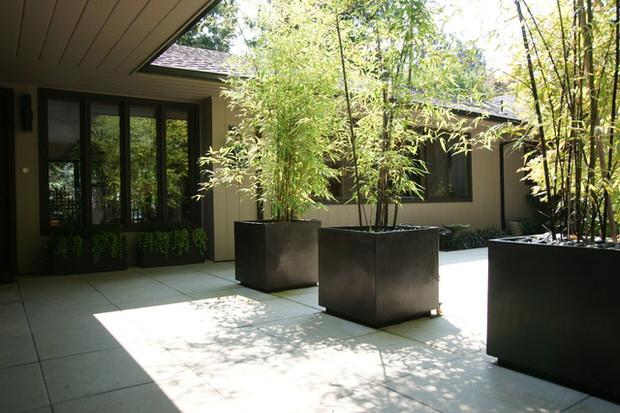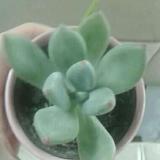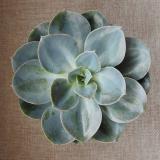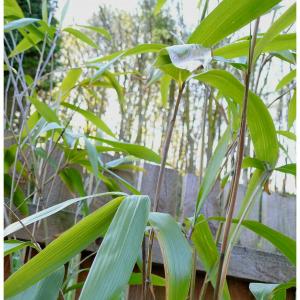文章
Dummer. ゛☀
2017年07月01日

Herba Dianthi nickname
The nickname is yemai, Dianthus stone flowers, flowers, ten kinds of landscape flower, mountain bamboo Dianthus, red flowers, nadeshiko.
The growth habit of Herba Dianthi
Herba Dianthi farming is simple plant breeding by pouring, planting and breeding, can also carry out ramet reproduction.
Herba Dianthi requirements of the soil is high, the general choice of well drained sandy soil is good. Water on the growth of Herba Dianthi is very important, need to pay attention to, not too dry or overwatered, ensure proper water can be. Fertilization, usually 3 times a year topdressing.
The value of Herba Dianthi
Herba Dianthi can do potted flowers for breeding, can also be raised in the flower, it has high medicinal value, can treat a variety of diseases. Will be made into Herba Dianthi pesticide, insecticide can.
Morphological character
Herbs perennial, 50-60 cm tall, sometimes taller. Stems tufted, erect, green, glabrous, Kobe Bunmie. Leaves linear lanceolate, 5-10 cm long, 3-5 mm wide, apex acute, midvein prominent, base forming sheaths, green, sometimes with pink green. Leaves opposite, more wrinkled, flattened, blade striped to lanceolate. Stems terete, with branches above, 30~60 cm long, surface pale green or yellow green, smooth, glabrous, nodes distinct, slightly inflated, hollow in section. Branches with flowers and fruits, calyx tube shaped, 2.7~3.7 cm long; bracts 4~6, broadly ovate, 1/4 long, calyx tube, petals brown, purple or brownish yellow, curly, apex deeply filiform. Capsule long tubular, as long as persistent calyx. Spend 1 or 2 lives under the top branch end, sometimes axillary; bracts obovate, 2-3, 6-10 mm long, about calyx 1/4, 4-5 mm wide, apex long acuminate; calyx cylindric, 2.5-3 cm long, 3-6 mm in diam., often dyed purple halo, calyx teeth lanceolate, 4-5 mm long; petals claw 4-5 cm long, 1.5-3 cm long, wrapped in a calyx tube, petals broadly obovate, margin of their cleft to middle or above middle, usually pale red or purplish, thin white, throat with silk hair like scales; stamens and style slightly exserted. The capsule is cylindrical, with persistent calyx length or slightly long, flat top 4 crack; seed ovoid, ca.



The nickname is yemai, Dianthus stone flowers, flowers, ten kinds of landscape flower, mountain bamboo Dianthus, red flowers, nadeshiko.
The growth habit of Herba Dianthi
Herba Dianthi farming is simple plant breeding by pouring, planting and breeding, can also carry out ramet reproduction.
Herba Dianthi requirements of the soil is high, the general choice of well drained sandy soil is good. Water on the growth of Herba Dianthi is very important, need to pay attention to, not too dry or overwatered, ensure proper water can be. Fertilization, usually 3 times a year topdressing.
The value of Herba Dianthi
Herba Dianthi can do potted flowers for breeding, can also be raised in the flower, it has high medicinal value, can treat a variety of diseases. Will be made into Herba Dianthi pesticide, insecticide can.
Morphological character
Herbs perennial, 50-60 cm tall, sometimes taller. Stems tufted, erect, green, glabrous, Kobe Bunmie. Leaves linear lanceolate, 5-10 cm long, 3-5 mm wide, apex acute, midvein prominent, base forming sheaths, green, sometimes with pink green. Leaves opposite, more wrinkled, flattened, blade striped to lanceolate. Stems terete, with branches above, 30~60 cm long, surface pale green or yellow green, smooth, glabrous, nodes distinct, slightly inflated, hollow in section. Branches with flowers and fruits, calyx tube shaped, 2.7~3.7 cm long; bracts 4~6, broadly ovate, 1/4 long, calyx tube, petals brown, purple or brownish yellow, curly, apex deeply filiform. Capsule long tubular, as long as persistent calyx. Spend 1 or 2 lives under the top branch end, sometimes axillary; bracts obovate, 2-3, 6-10 mm long, about calyx 1/4, 4-5 mm wide, apex long acuminate; calyx cylindric, 2.5-3 cm long, 3-6 mm in diam., often dyed purple halo, calyx teeth lanceolate, 4-5 mm long; petals claw 4-5 cm long, 1.5-3 cm long, wrapped in a calyx tube, petals broadly obovate, margin of their cleft to middle or above middle, usually pale red or purplish, thin white, throat with silk hair like scales; stamens and style slightly exserted. The capsule is cylindrical, with persistent calyx length or slightly long, flat top 4 crack; seed ovoid, ca.



0
0
成长记
meriunkat
2017年06月30日

I new added a "Bamboo" in my "garden"


1
0
meriunkat:yes I know it's in bad state lol, I've been so busy taking care of propagating baby succulents I've neglected this bamboo's care lols
文章
Hande Salcan
2017年05月23日

Bamboo is a great choice for specimen planting or for screening, and it can be easy to grow if you know how to manage it. It fits in with most garden styles, and there are varieties of nearly every size and for every hardiness zone. Here are the basics on how to grow bamboo in your garden!
Types of Bamboo
There are basically two types of bamboo. Running bamboo is the type you have been warned about that can take over your entire yard (and the next one) in a pretty darn short time, turning it into a tropical jungle. But with some tricks, you can grow it!

Clumping bamboo is more well contained, and while it still spreads underground, it is much slower and controlled. This is a better choice for the casual gardener, or those with limited space but who still want to enjoy the beauty of graceful bamboo.
Bamboo Basics
Both types of bamboo have tropical varieties meant for warmer climates, and mountainous varieties hardy down to -15 degrees or more. Check your nursery tag.
Choose a bamboo that has a mature height that fits in with the scale of the effect you desire. Screening bamboos can be taller, specimens can be shorter.
Bamboo requires well drained soil.
For the first two years in the ground, water your bamboo well. Fertilize once in the spring. If you are trying to prevent running bamboo from, well, running… don’t fertilize as often.
Check on whether your variety prefers full sun, or some afternoon shade.
Prune back to the ground old, dull culms every year. (Culms are the upright “blades” of bamboo.) Some gardeners prefer to prune off any branches that extend horizontally, so that all culms run vertically straight up for a graphic and striking effect. If you have culms flopping over, they probably require more water, less feritlizer. You can prune back the height to help them recover, or just prune them down altogether.
How to Grow Running Bamboo
If you have found a species of running bamboo that you just have to try, you will have to contain the underground roots from spreading beyond your planting area. There are several ways to achieve this.
You can transplant your nursery bamboo into a large pot, then plant the whole pot into the ground. Leave the collar of the pot above ground. Cover with mulch if you find it unsightly.
Another option is to place a plastic or concrete barrier at least 12-18 inches below the soil. Bamboo are shallow rooted so this should prevent the bamboo from running away. You can prune back to the ground any culms that escape beyond the barrier.
Finally, you can dig a 12 inch deep trench around the area you would like to contain the bamboo too. Fill with sand, then several times a season, pull back the sand and prune back any roots that have poked through into the trench.

How to Grow Clumping Bamboo
Clumping Bamboo is much less likely to run rampant across your property. Many varieties are quite polite in fact. Make sure you check the size and space requirements of the variety you purchase.

Bamboo in Containers
Both types of bamboo can be grown successfully in containers. This is the lowest maintenance option, and can help maintain the health of the rest of your garden. Be sure to choose a container large enough to be in scale with the eventual height of your variety.

Bamboo is not the garden evil that urban legend portrays…as long as you tend to it’s needs. It can turn a ho hum yard into a stunning garden in a short time, with these few bamboo growing tips and tricks. So are you brave enough to give it a try?

Types of Bamboo
There are basically two types of bamboo. Running bamboo is the type you have been warned about that can take over your entire yard (and the next one) in a pretty darn short time, turning it into a tropical jungle. But with some tricks, you can grow it!

Clumping bamboo is more well contained, and while it still spreads underground, it is much slower and controlled. This is a better choice for the casual gardener, or those with limited space but who still want to enjoy the beauty of graceful bamboo.
Bamboo Basics
Both types of bamboo have tropical varieties meant for warmer climates, and mountainous varieties hardy down to -15 degrees or more. Check your nursery tag.
Choose a bamboo that has a mature height that fits in with the scale of the effect you desire. Screening bamboos can be taller, specimens can be shorter.
Bamboo requires well drained soil.
For the first two years in the ground, water your bamboo well. Fertilize once in the spring. If you are trying to prevent running bamboo from, well, running… don’t fertilize as often.
Check on whether your variety prefers full sun, or some afternoon shade.
Prune back to the ground old, dull culms every year. (Culms are the upright “blades” of bamboo.) Some gardeners prefer to prune off any branches that extend horizontally, so that all culms run vertically straight up for a graphic and striking effect. If you have culms flopping over, they probably require more water, less feritlizer. You can prune back the height to help them recover, or just prune them down altogether.
How to Grow Running Bamboo
If you have found a species of running bamboo that you just have to try, you will have to contain the underground roots from spreading beyond your planting area. There are several ways to achieve this.
You can transplant your nursery bamboo into a large pot, then plant the whole pot into the ground. Leave the collar of the pot above ground. Cover with mulch if you find it unsightly.
Another option is to place a plastic or concrete barrier at least 12-18 inches below the soil. Bamboo are shallow rooted so this should prevent the bamboo from running away. You can prune back to the ground any culms that escape beyond the barrier.
Finally, you can dig a 12 inch deep trench around the area you would like to contain the bamboo too. Fill with sand, then several times a season, pull back the sand and prune back any roots that have poked through into the trench.

How to Grow Clumping Bamboo
Clumping Bamboo is much less likely to run rampant across your property. Many varieties are quite polite in fact. Make sure you check the size and space requirements of the variety you purchase.

Bamboo in Containers
Both types of bamboo can be grown successfully in containers. This is the lowest maintenance option, and can help maintain the health of the rest of your garden. Be sure to choose a container large enough to be in scale with the eventual height of your variety.

Bamboo is not the garden evil that urban legend portrays…as long as you tend to it’s needs. It can turn a ho hum yard into a stunning garden in a short time, with these few bamboo growing tips and tricks. So are you brave enough to give it a try?

2
3
文章
Micky
2017年02月16日

Learn how to grow bamboo from cuttings, growing bamboo from cuttings is possible if you grow it in warm temperature.
Bamboo is actually a grass, but its wood is strong enough to be used in flooring and furniture. In the garden bamboo is usually grown for its ornamental aspect or as a privacy tree as it grows quickly and mostly in clumps that can be so dense that you can not walk through them.

How to Grow Bamboo from Cuttings in WaterTo grow bamboo from cuttings in water, cut several 10 inches long cuttings from new growth that has at least two nodes and two internodes. Cut it in a slight 45 degree angle with a sharp knife.Dip the ends of cutting in melted wax. Place the cutting in water and leave it on a well lit location for several weeks.Change the water every other day as standing water will quickly run out of oxygen.Move the cutting in a pot as soon as it has 2 inches long roots. Fill the pot with potting mix or a mixture of 1 part loam to 1 part sand to improve drainage. Make a hole in soil and plant the cutting to 1 inch depth into the soil.For support tie it to a stick with string. This will stabilize the bamboo cutting until it establishes.Growing Bamboo from RhizomesTake bamboo rhizomes and cut them into portions leaving two or three growth buds on each with a gardening knife. Don’t use rhizomes with a dark and patched appearance as they will not grow well.Lay the bamboo rhizomes horizontally on pots with the buds facing up. Spread a 3 inch layer of soil over them and water thoroughly until the soil looks deeply moist.Place the container in a warm spot under light shade.

Keep the soil slightly moist consistently. Remember not to overwater the rhizome cuttings otherwise they will rot.Rhizomes will take four to six weeks to grow, you can plant them outside once nighttime temperature start to stay around 55 F.How to Grow Bamboo from Culm CuttingsCut a few cuttings from three or four years old bamboo plant in various sections with a hacksaw. Each section must contain at least one node and one internode. Remove the existing leaves in between.Fill a pot with potting mix or a mixture of equal parts of coarse sand and loam.Seal the first ridges of bamboo cuttings with wax to save them from rotting or drying. Melt the wax and simply dip it in about 1/8 inch.Pour 2 tablespoons of rooting hormone in a plastic bag and immerse the bamboo cuttings in it. Shake off the excess rooting hormone and make several holes in soil and plant cuttings in it.Cover the cuttings with clear plastic bag and set the pot in a warm area, out of direct sunlight. Water them to keep the soil moist.When you see new shoots, it means cuttings are forming roots. Continue to grow the bamboo plants in containers or plant outside when whether warms up.
Bamboo is actually a grass, but its wood is strong enough to be used in flooring and furniture. In the garden bamboo is usually grown for its ornamental aspect or as a privacy tree as it grows quickly and mostly in clumps that can be so dense that you can not walk through them.

How to Grow Bamboo from Cuttings in WaterTo grow bamboo from cuttings in water, cut several 10 inches long cuttings from new growth that has at least two nodes and two internodes. Cut it in a slight 45 degree angle with a sharp knife.Dip the ends of cutting in melted wax. Place the cutting in water and leave it on a well lit location for several weeks.Change the water every other day as standing water will quickly run out of oxygen.Move the cutting in a pot as soon as it has 2 inches long roots. Fill the pot with potting mix or a mixture of 1 part loam to 1 part sand to improve drainage. Make a hole in soil and plant the cutting to 1 inch depth into the soil.For support tie it to a stick with string. This will stabilize the bamboo cutting until it establishes.Growing Bamboo from RhizomesTake bamboo rhizomes and cut them into portions leaving two or three growth buds on each with a gardening knife. Don’t use rhizomes with a dark and patched appearance as they will not grow well.Lay the bamboo rhizomes horizontally on pots with the buds facing up. Spread a 3 inch layer of soil over them and water thoroughly until the soil looks deeply moist.Place the container in a warm spot under light shade.

Keep the soil slightly moist consistently. Remember not to overwater the rhizome cuttings otherwise they will rot.Rhizomes will take four to six weeks to grow, you can plant them outside once nighttime temperature start to stay around 55 F.How to Grow Bamboo from Culm CuttingsCut a few cuttings from three or four years old bamboo plant in various sections with a hacksaw. Each section must contain at least one node and one internode. Remove the existing leaves in between.Fill a pot with potting mix or a mixture of equal parts of coarse sand and loam.Seal the first ridges of bamboo cuttings with wax to save them from rotting or drying. Melt the wax and simply dip it in about 1/8 inch.Pour 2 tablespoons of rooting hormone in a plastic bag and immerse the bamboo cuttings in it. Shake off the excess rooting hormone and make several holes in soil and plant cuttings in it.Cover the cuttings with clear plastic bag and set the pot in a warm area, out of direct sunlight. Water them to keep the soil moist.When you see new shoots, it means cuttings are forming roots. Continue to grow the bamboo plants in containers or plant outside when whether warms up.
0
0






















